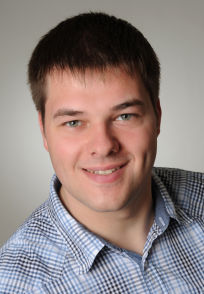Project P7
Project description
Numerical Relaxation Techniques for the Modeling of Microstructure Evolution in Multifunctional Magnetic Materials
The focus of the project during the first funding period was placed on the development of constitutive models for the predictive description of nonlinear, hysteretic and anisotropic magnetostriction on the basis of relaxed energy potentials. The central goal of the project continuation is to take the developed modeling concept from special case solutions to broad scale applicability.In the spirit of such a generalization, the restriction of the analysis to magnetic shape memory alloys, simple geometries, and two-dimensional settings shall be removed. The project thereby concentrates on the theoretical model development and subsequent algorithmic implementation in three focus areas: In a first step, the implementation of the energy relaxation models into finite element-based solution schemes for fully-coupled magnetomechanical boundary value problems is realized. In this manner, a simulation tool is created, that not only captures the influence of energy minimizing microstructures on magnetostriction in homogeneous problems, but that can also be employed to simulate single crystal samples of arbitrary geometry or polycrystalline aggregates. It shall also be possible to impose macroscopic fields onto meso-scale Representative Volume Elements (RVEs)---this establishes the algorithmic basis and an interface for the implementation into direct numerical homogenization via the FE2 method. The second step is focused on the extension of the relaxation based material model. This centrally comprises the generalization to three-dimensional effects while accounting for the full spectrum of microstructural evolution mechanisms and aims to improve the applicability of the material model. In this context, careful studies of the efficiency and stability of the underlying numerical schemes are of the essence. In a third step, a transfer of the modeling and simulation concepts will be performed. To this end, the application to other material systems---whose macroscopic magnetostriction behavior may be driven by differing microstructural mechanisms---shall be addressed, including experimental validation. Another important aspect is the quantitative comparison between predictions of the extended energy relaxation model and simulations on the basis of alternative concepts (phase field, laminate based mixture theory), to allow a well-founded assessment of the performance and applicability of the different modeling approaches.




